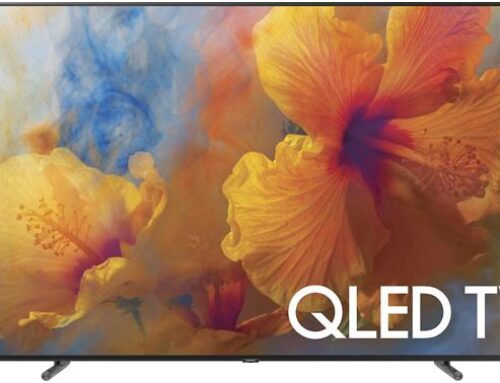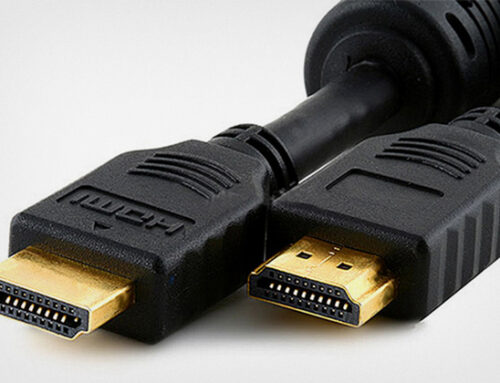By Kevin Miller
High Dynamic Range video (HDR) is the big buzz in the home theater industry at the moment. It is, in my humble opinion, the biggest leap in picture quality and display performance the industry has seen since the introduction of HDTV broadcasts in late 1998, which slowly but surely replaced the 480i SD pictures we had been used to since the inception of television.
Beyond the UHD (3840 x 2160) pixel resolution, HDR UHD content brings us far more noticeable and therefore more important improvements such as the specular highlight details in bright objects, the additional shadow detail in dark areas of the picture, and the wider Digital Cinema or P3 color gamut.
The question then is how do we calibrate our displays for HDR and can we calibrate a given display separately for all of the different HDR formats; HDR10, Dolby Vision, and the Technicolor/Philips format, which are all competing HDR formats?
As of this writing, HDR10 is the only HDR format on UHD Blu-rays, which is the highest quality HDR source we currently have due to its far greater bandwidth over streaming HDR content. HDR10 and Dolby Vision content are available from Amazon, Vudu, Netflix and other streaming services, but the image quality is not even close to what you get with HDR10 on UHD Blu-ray. It should be noted that, at least on LG displays, when you feed Dolby Vision content to the set, it locks you out of all of the calibration features on the TV making calibration impossible. Since there is no content currently available that I know of in the Technicolor or Philips formats, then that leaves HDR10 as the only viable HDR format that can be calibrated.
For just under a year now, I have been using the Samsung 2016 HDR10 Reference UHD Blu-ray test disc authored by Florian Friedrich of AVTop in Munich Germany. The disc offered the technical press, and a few other fortunate folks who worked with Friedrich and Samsung demonstrating the disc to the industry, a simple yet somewhat effective method of both evaluating a display’s HDR performance, and making an improvement in overall color accuracy of the HDR performance of the display. Unfortunately, this disc was never made available to most of the industry, and also will not play in any UHD Blu-ray player other than Samsung’s UBD-K8500.
First generation HDR capable displays present a real problem when it comes to calibration for HDR. The 2015 Samsung models, for example, do not have an HDR picture mode devoted to HDR10 sources, and the LG UHDTVs from the same year have a similar problem, lacking a devoted HDR mode.
I calibrated my Samsung UN65JS9500, the company’s 2015 flagship full array LED backlit LCD TV with local dimming. Optimizing the Movie mode for SDR playback was a relatively easy process. Then, when feeding it an HDR source from a Samsung UBD-K8500 UHD Blu-ray player, I found that the set shared the same picture mode between SDR and HDR sources. However, when fed an HDR source the set changes the Backlight and Contrast settings from the calibrated settings for SDR to maximum. Unfortunately, the grayscale and Custom Color Space settings are shared between the two formats, which was not a huge problem with the 2015 Samsungs as the grayscale was reasonably close to the D65 reference in the HDR mode using the SDR grayscale calibration settings. The secondary color accuracy was certainly not as good as I would like.
Fortunately, Samsung’s 2016 LED LCDs models have dedicated memory for HDR setup and calibration. SDR and HDR sources now share the same picture mode, but have completely separate memories so separate calibrations can be performed for the two formats at the same picture mode.
I recently had my first opportunity to calibrate a 2015 LG 65EF9500 OLED for HDR, the company’s first HDR capable UHD OLED model for HDR10, which also lacked a dedicated HDR mode. However, since it has ISF Day and ISF Night picture modes, I was able to devote the ISF Day mode to HDR10 sources. Interestingly, I found that the grayscale controls were grayed out when in HDR mode, but the Color Management was available. I also discovered I could actually fool the display by taking readings of the grayscale using the Samsung 2016 HDR10 Reference UHD Blu-ray test disc with the set in HDR mode, and then ejecting the disc, which put the TV back into SDR mode giving me access to the grayscale controls, I was then able to adjust the controls as needed, based on the reading I got while in HDR mode. Next, I went in and out of HDR and SDR modes multiple times and adjusted the 2-point grayscale feature until I obtained acceptable grayscale readings with the Samsung HDR test disc. The results yielded an excellent HDR viewing experience.
LG’s 2016 OLED models have dedicated HDR modes, and the calibration process is somewhat easier on the new models. I can now perform full 20-point grayscale calibration, and correct the color space accuracy of the P3 (DCI) color reference for HDR using the Murideo signal generator and CalMAN 2016, which is a step in the right direction. However, the LG’s grayscale controls stop working somewhere between 50 and 75% of the way through the 20-point process, so the results show large delta errors in the last 25 to 50% of the grayscale depending on the set.
Please see the CalMAN HDR10 Report on the LG 65EF9500. Regrettably, this report from CalMAN only gives us post calibration results and no way of recording the TV’s settings for the client.
CALMAN HDR10 PDF OF LG 65EF9500
I also used my Custom Workflow and Report in CalMAN while calibrating a 2016 Sony XBR75X940D for HDR. This display does have a dedicated HDR picture mode. However, the HDR calibration tools are limited to 2-point grayscale. As a result, the grayscale errors on Sony displays are larger because we can only use the 2-point grayscale for grayscale calibration as 10-point doesn’t apply, and the set lacks 20-point white balance that can be associated with 20 code values from the 10-bit range of 64 to 1023. The Sonys also lack Color Management, so errors in the P3 Color space, secondary colors especially, cannot be corrected or improved.
Note the ISFTV report shows much more comprehensive detail in the grayscale tracking, and the color gamut accuracy and color tracking accuracy than is provided by the stock CalMAN HDR10 report.
At this point in time, calibrating for HDR is somewhat frustrating. Most signal generators lack a complete suite of test material for HDR. My Murideo FRESCO SIX-G 4K signal generator now has the correct Rec 2020 coefficients, and used with CalMAN 2016 software is a nearly complete tool for HDR calibration. However, it still lacks a correct PLUGE (Picture Lineup and Generation) test pattern for correctly setting black level.
In the coming months, I anticipate there will be a number of new UHD HDR Blu-ray test discs and additional test material available in UHD signal generators on the market that will enhance the technical editors and calibrator’s tool boxes for HDR calibration and HDR display evaluation.





